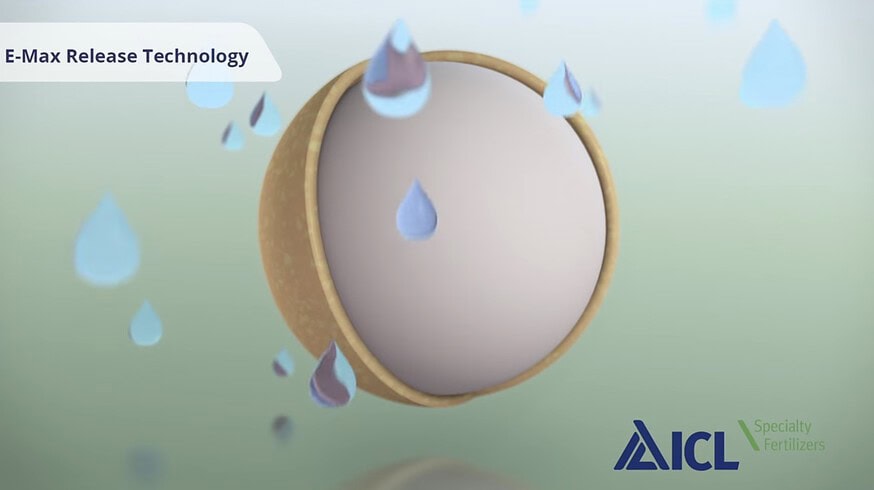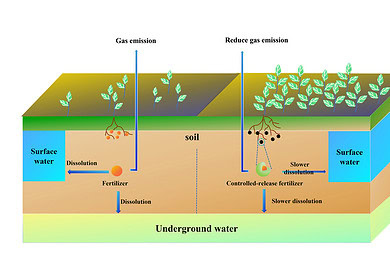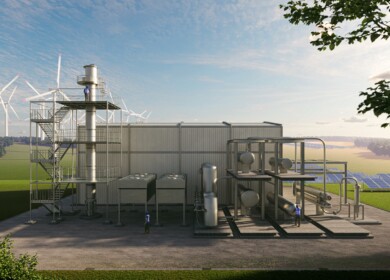The evolution and impact of controlled-release fertilizer technology in modern agriculture

In the quest for sustainable agriculture, farmers and agronomists face the dual challenge of maximizing crop yields while minimizing environmental impacts. Controlled-release fertilizers (CRFs) have emerged as a vital tool in this endeavor, offering a more efficient and sustainable method to nourish crops throughout their growth cycles.
Plants require various nutrients to grow and complete their life cycle, but these nutrients often deplete over time. Fertilizers are crucial for replenishing these nutrients, ensuring optimal plant growth. The responsible use of fertilizers not only leads to healthier crops and higher yields but also aids in environmental conservation.
At the heart of successful and sustainable farming lies effective nutrient management. This strategy enables farmers to precisely determine the specific nutrients needed at different growth stages, enhancing crop health and yield while providing financial benefits by minimizing unnecessary nutrient applications. This approach helps reduce risks such as nutrient leaching, runoff, or mineralization, which are detrimental to the environment.
The application of CRFs is a significant advancement in nutrient management. These fertilizers release nutrients in a controlled manner, directly targeting the varying growth phases of plants. This method is especially crucial because plants assimilate nutrients progressively over time, not all at once. Therefore, the judicious use of fertilizers is essential for sustaining crops, increasing productivity, and limiting environmental impacts. However, traditional nutrient application methods, such as split applications or fertigation, while reducing nutrient loss, still require more resources, careful scheduling, and are not always effective in preventing nutrient loss.
CRFs provide a sustainable solution to these challenges. These fertilizers, often coated with a semi-permeable material, slowly release nutrients into the root zone as plants grow. This process is typically influenced by soil temperature, which correlates with the growth rate of plants. Hence, as soil temperature increases, so does plant growth and nutrient uptake from CRFs.
Unlike slow-release fertilizers (SLFs), which are affected by temperature, water, soil pH, and microbial activity, CRFs primarily depend on temperature for nutrient release. These polymer-coated fertilizers significantly improve nutrient management efficiency and eliminate the need for multiple applications throughout the season. Farmers can apply CRFs once at the start, and the nutrients will last all season long.
The development of CRFs dates back to 1842 when Sir John Bennet Lawes patented a process for creating artificial fertilizers, laying the foundation for the modern fertilizer industry. This innovation led to the introduction of Osmocote®, the first CRF, in 1967, which marked a significant shift in how nutrients were delivered to plants. Osmocote® offered a gradual nutrient release, enhancing sustainability and efficiency in plant nutrition. By 2023, the controlled-release fertilizer market had grown to a valuation of US $2.2 billion, reflecting its impact on global food production and land use efficiency.
ICL, a leader in fertilizer technology, has been at the forefront of CRF innovation. Their research and development team is dedicated to creating products that not only enhance grower efficiency but also protect the environment. ICL’s various CRF formulations, such as the semi-permeable E-Max coating, allow nutrients to dissolve gradually and be released through microscopic pores, reducing the frequency and rates of fertilizer application and boosting nutrient use efficiency.

ICL’s innovative product lines, such as Agrocote, Agromaster, and Agroblen, utilize this technology to meet the diverse needs of growers worldwide. These products help reduce nutrient loss through leaching, volatilization, denitrification, and P-fixation, providing a safe and efficient nutrient delivery system for crops.
Furthermore, ICL has introduced eqo.x, a pioneering CRF with a biodegradable coating designed for open-field agriculture. Launched in September of the previous year, eqo.x is aligned with upcoming European fertilizer standards and aims to halve nutrient loss by 2030. This technology enhances crop yield, reduces nitrogen applications, and safeguards soil and groundwater quality.
To assist growers in optimizing nutrient management, ICL developed the CRF Timer, an app that integrates data from weather stations to track nutrient release from CRFs based on local conditions. This tool helps growers select the appropriate ICL product for their specific environmental and crop requirements.
In conclusion, controlled-release fertilizer technology plays a crucial role in the future of sustainable agriculture. With innovations like biodegradable coatings and precise nutrient management tools, CRFs help farmers achieve higher yields with fewer resources while preserving the environment. ICL’s commitment to sustainability and innovation in fertilizer technology ensures a healthier and more sustainable world for future generations.
Enjoyed this story?
Every Monday, our subscribers get their hands on a digest of the most trending agriculture news. You can join them too!












Discussion0 comments